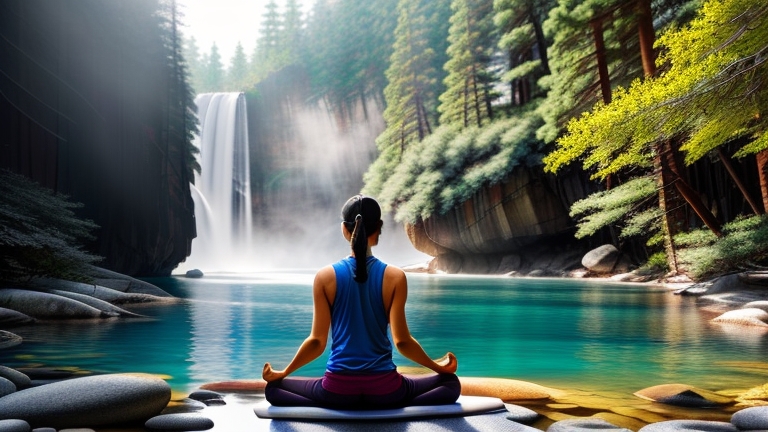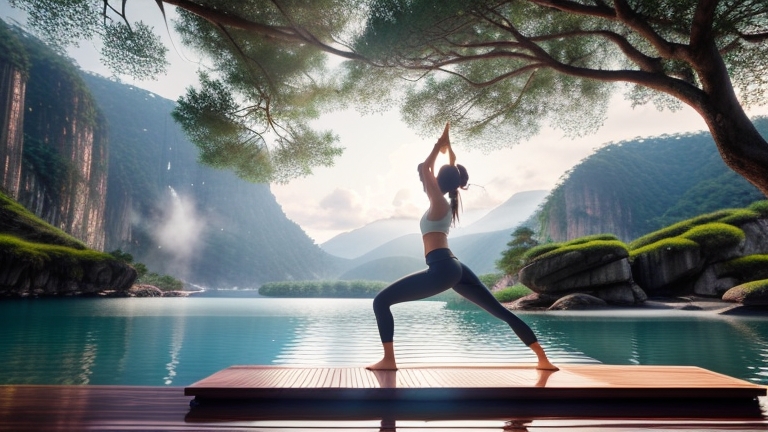Unwind and Destress

Stress is a universal experience, one that can be both debilitating and detrimental to our health. Fortunately, there are ways to cope with stress, one of which is progressive muscle relaxation (PMR). PMR is a relaxation technique that helps to unwind and destress the body by alternating between tension and relaxation in different muscle groups. Mastering PMR can bring a multitude of benefits to one’s physical and mental well-being. In this article, I’ll discuss the basics of PMR, its benefits, and how to practice it properly.
Understanding the Mind-Body Connection
The mind-body connection is an important concept to understand when it comes to mastering progressive muscle relaxation. It is the idea that the body and the mind are intimately connected. Stress can manifest itself in the body in the form of physical tension. Recognizing physical tension in the body is an important step to take in mastering progressive muscle relaxation.
By understanding the relationship between the mind and the body, it is possible to reduce stress and tension by consciously relaxing the body. It is important to recognize the signs of physical tension in the body, such as tightness in the muscles and shallow breathing. By doing so, you are able to more accurately target areas of tension for relaxation.

Preparing for Progressive Muscle Relaxation
Before beginning your practice of progressive muscle relaxation, it is important to prepare your environment. Find a comfortable place where you will not be disturbed, and ensure you have enough time to complete your relaxation practice. It is also beneficial to wear loose, comfortable clothing, and to remove any items that may cause distraction from your practice. Once you have prepared your environment, you can begin your practice of progressive muscle relaxation.
Practicing Progressive Muscle Relaxation
Once you have created a comfortable atmosphere for yourself, practicing progressive muscle relaxation can begin. To practice, you will start by tensing and then relaxing each muscle group in your body. Begin with the muscles of your forehead and scalp, then move down to your eyes, mouth, neck and shoulders. You can continue this process all the way down to your toes. As you go, take deep breaths and focus on the parts of your body that you’re tensing and relaxing. Try using visualizations or relaxation cues such as positive words or images to help put your body at ease. With time and regular practice, you’ll be able to master progressive muscle relaxation.
Building the Relaxation Response
The key to mastering progressive muscle relaxation is to practice it regularly. The more often it is done, the more the body will learn to automatically relax when it is triggered. This is known as the relaxation response. It is the physical state that occurs when the body is completely at rest.
In order to build the relaxation response, it is important to stay mindful of physical sensations and to incorporate relaxation techniques into everyday life. This could include taking a few moments to practice progressive muscle relaxation during periods of stress or before bed. By doing this, the body and mind will become more accustomed to the feeling of relaxation.

Making Adjustments
After mastering the basics of progressive muscle relaxation, it’s important to make adjustments as needed. Identify areas of the body that are more difficult to relax and focus on those areas for a few extra moments of relaxation. Incorporate stretching and breathing exercises into your relaxation routine to help the body relax even more. It is also important to deal with intrusive thoughts that can disrupt the practice of progressive muscle relaxation. By taking the time to acknowledge and reframe those thoughts, it can help to further relax the body and mind.
By making these adjustments, it can help to further reduce stress and tension in the body. Incorporating progressive muscle relaxation and other relaxation techniques into everyday life can help to make it a part of your daily routine. Even just taking a few moments to practice progressive muscle relaxation can bring a sense of balance and calm to your day.
Conclusion
Progressive muscle relaxation is a powerful tool for reducing stress and improving overall well-being. With regular practice, it has the potential to help you master the relaxation response, increase your awareness of physical sensations, and reduce overall tension. It is important to remember that many people find it difficult to relax certain muscle groups, and in these cases, it is recommended to incorporate stretching and breathing exercises to further enhance the relaxation response. Additionally, it is important to acknowledge any intrusive thoughts that may arise during practice, as this is natural and expected.
In summary, progressive muscle relaxation can be a great way to reduce stress, improve overall well-being, and master the relaxation response. With patience and practice, this technique can help you to relax and unwind the body and mind. Thank you for reading today’s blog post.
FAQ’s
1. What is Progressive Muscle Relaxation (PMR)?
Progressive Muscle Relaxation (PMR) is a relaxation technique aimed at reducing stress and tension in the body. It involves alternating between tensing and relaxing different muscle groups to promote relaxation and alleviate physical and mental stress.
2. How does PMR work in reducing stress?
PMR works by increasing awareness of physical tension in the body, which is often a physical manifestation of stress. By consciously tensing and then relaxing muscle groups, individuals can release this tension, promoting a state of relaxation and reducing overall stress.
3. What are the benefits of practicing PMR?
Practicing PMR can bring several benefits, including stress reduction, improved mental well-being, better sleep quality, and enhanced awareness of one’s body. It can also help in managing physical symptoms associated with stress, such as muscle tension and shallow breathing.
4. How can I get started with PMR?
To begin practicing PMR, find a quiet and comfortable space where you won’t be disturbed. Start by tensing and relaxing different muscle groups from head to toe while focusing on your breath and using relaxation cues. The article provides a step-by-step guide on how to get started with PMR.
5. How often should I practice PMR to see results?
Consistency is key when it comes to PMR. The more you practice, the more effective it becomes. Aim to practice PMR regularly, ideally daily or whenever you feel stressed. Over time, your body will become more accustomed to the relaxation response, leading to better stress management and overall well-being.





